How Locomotives are Classified by Indian Railways
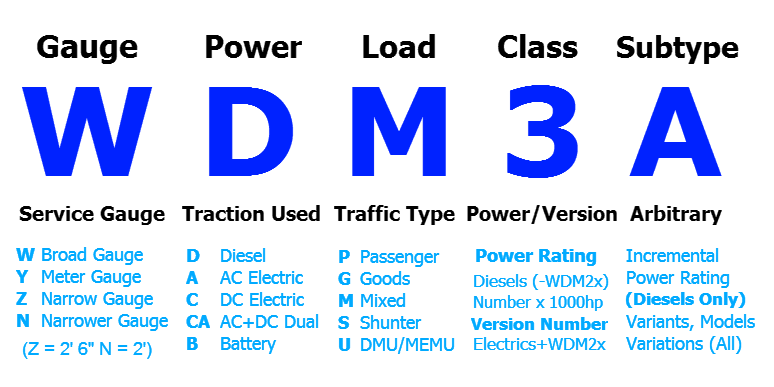
Locomotives can run under their own power or can run drawing power from elsewhere, converting fuel into pure kinetic energy that you can feel just by looking at it. And these are just two types of locomotives. There are many more types and identifying these locomotives is even a major sport across the World. In India, it is possible to know everything about a locomotive just by looking at it or by looking at a notation and it is no rocket science.
Classification of Locomotives in India by Type
Locomotives can be broadly classified into what fuel they use. But they can also be classified according to the gauge they run on. Then again, they can still be classified according to what work they are used for and according to their power. So which parameter do we use to classify locomotive types? Easy. We use all of them! To avoid confusion and to uniquely identify locomotives according to what they do and how they work, Indian Railways have developed a stunningly simple system which classifies locomotives into different classes taking into account all their parameters like Gauge, Traction, Usage, Version, Power etc. Locomotives are divided into the broadest classes at first and then sub-classified into narrower parameters and are given a notation or name which is basically a string of alphabets and numbers, which each letter or number representing a unique parameter of the loco or engine. These derived classes are called “Class Names” or “Class Types”. There may by hundreds or thousands of units of one class type or there might be none or below 10 units of another type.
Each locomotive Class Name will consist of three or four alphabets followed by a number and then an optional alphabet or two. Each of these letters can be said to be a “slot”, which can be filled by a predefined set of alphabets or numbers to denote some characteristic of the loco such as the gauge on which it runs, the traction it uses, the work it is supposed to do, the power rating/model/variant of the locomotive etc. The Class Name can be found painted on the front, back and sides of the loco. The most common classes of locomotives in India are the YDM4, WDM2, WDM3A, WDG3A, WDS4B WDP4, WDG4, WAM4, WAG5, WCAM2, WAP1, WAP4, WAP5, WAP7, WAG9 etc. It is important to note that the class name is assigned by the Railways for ease of classification and NOT by the manufacturer.
To illustrate what these strings of letters and numbers mean, here is an example: WDM3A:

The First Letter – The Gauge it Runs on.
The first letter in all Class Names stands for what track gauge the locomotive will run on, officially called “Gauge“. The letters that will appear in this slot are W, Y, Z and N, each representing a particular type of gauge. If a W appears in the beginning of the class name, it will denote a locomotive running on Broad Gauge track (1676 mm). If it is a Y it tells us that the loco will run only on Meter Gauge, Z is 2’6″ Narrow Gauge and N is 2′ Narrow Gauge. Now that all lines in India are being converted to Broad Gauge, non-W locos are becoming increasingly rare. Why W, Y and Z instead of, say, B, M and N? During British times, the three gauges for some reason were arbitrarily named X, Y and Z. After independence, X was changed to W, meaning “Wide” for the “Wide” Broad Gauge. The remaining two were left as they were. So, WDM3A is a Broad Gauge Locomotive.
The Second Letter – What Fuel it Uses.
The second letter in the class name notation stands for the type of traction used by the locomotive, or the power it runs on. Officially, “Power“. The letters that will appear here are D, A, C, CA and B. D denotes a Diesel Locomotive, an A denotes an AC loco running on 25 kV 50 Hz Alternating Current (AC) power, C denotes a loco running on 1500V Direct Current (DC) power, CA denotes a locomotive that can run on both AC and DC power and B denotes a loco running on battery power. C and CA type locomotives are found only in the Mumbai area as all of the remaining part of the country uses 25 kV AC power. And again, as all DC in the country is being converted to AC, we will not see more of C and CA locos. (Note, CA is considered a single letter). Now we know that WDM3A is a Broad Gauge Diesel Locomotive.
The Third Letter – What it Hauls.
The third letter in the class name notation specifies what type of work the locomotive is best suited for, called “Load“. The load can be denoted by P, G, M, S, U, R which shows what type of work the loco is best suited to do. If the third letter in the class name of a locomotive is a P, it will mean it is specifically meant for hauling trains running passenger services (expresses, mails, local, passenger, anything), a G will denote a locomotive best suited for Goods (Freight) trains and if it is M, it says that the loco can be used for any service, Passenger or Goods (Mixed). An S denotes a low powered shunting locomotive, a U designates EMU rakes (local train rakes) which have motors housed in the rake itself and don’t have separate locomotives. There is another one R which denotes a Railcar. So far, the WDM3A is a Broad Gauge Diesel Locomotive for Passenger and Goods Services.
Note: The first three alphabets of the class name are together called a “Sequence” denoting the basic classification or the locomotive model type. The remaining letters just denote variants just like the version numberss for software releases.
The Fourth Number – Version/Power
The fourth slot in the class name will always be occupied by a number called “Series“, denoting different things for different types of locomotives. For most locomotives today, this number generally denotes the chronological order or the “serial” or “version” in which the locomotive was introduced. The First AC powered loco was a WAM1 and then came WAM2, WAM3 etc. A new version number can mean a new model altogether (WAM3 to WAM4) or a major upgrade of an existing model (WAP1 to WAP4). New version numbers can be also given even to new prototype testing locos which have only small numbers built like the WCM6 (only two in existence), WAM3 (only 10 produced) or WDP3 (Only Prototypes). This is why there are over 50 classes of locomotives in India but only around 15 are widely produced and in service. This number was initially intended to denote horsepower of the locomotive engine in multiples of 1000 hp. So a 2 will denote a locomotive with an engine with more than 2000 – 3000 hp power rating. However, this remained applicable only for WDM3X(A-F), WDG4 and WDP4 diesels. For all remaining diesels including the non-BG ones and for all electrics, the number denotes the version. Our WDM3A now is a Broad Gauge Diesel Locomotive for Passenger and Goods Services which has 3000 hp+ pulling power.
The Fifth Letter – The Subtype
The fifth and in most cases the last letter is called a “Subtype” and is the most confusing of all. It can be a letter or a number and may arbitrarily denote anything from power rating to unique factors of the loco. For the WDM3(A-F) diesels only, the subclass annotation will be letters denoting incremental hp power in multiples of 100. “A” denotes 100 hp added to the 3000 hp, “B” denotes 200 hp, “C” is 300 hp, “F” denotes 600 hp and so on. So a WDM3F will have an engine with 3600 hp power. For all other locomotives, diesel or electric, the Subtype annotation can mean anything, including major or minor modifications to original loco types, addition of components, rebuilds or any other unique identification factors. Some locomotives have even a sixth or more alphabets/numbers called a “suffix”. For Example, WDM2A – WDM2 with Airbrakes, WDP4D – WDP4B with Dual Cabs, WAG5HB – WAG5 with Hitachi traction motors built by BHEL, WAG9H – a Heavier WAG9 with better Tractive Effort, WAM4PD – A WAM4 assigned specifically for Passenger duties which has Dual Brakes etc.
Add ’em Up and you Have your Loco Class!
So a WDM3A is a Broad Gauge Diesel locomotive to haul both Passenger and Freight trains, with a power rating of 3100 hp. In the same way by mixing matching these letters we can get all class names of any locomotive types. YDG1 means a first version Meter Gauge Diesel locomotive for Goods trains. WDM2 is a 2000+ hp powered Broad Gauge Diesel locomotives for all loads while a WDG4 is a 4000 hp Broad Gauge Diesel locomotive for hauling goods trains. YAM4 denotes a 4th version AC electric traction Meter Gauge loco for all services, a WAP4 is a 4th version AC electric Broad Gauge loco specifically for passenger services while a WAG7 is a 7th version Broad Gauge AC electric Goods locomotive. WCAM3 is a 3rd version Broad Gauge locomotive which can run on both AC and DC current and can be used for both Passenger and Goods services. WDS6 is a 6th version Broad Gauge Diesel Shunting locomotive, ZDM1 is a Diesel Narrow Gauge all-purpose loco and so on.
Ideally, all these alphabets can be mixed and matched to cover all locomotives on IR, and even some imaginary ones can be created, like YCG (Meter Gauge DC Electric Freight loco), WCAP (Broad Gauge AC/DC Electric Passenger loco) etc, which do not exist but are perfectly feasible.
The Road Number
In addition to the Class name, every locomotive is assigned a unique 5-digit number called a Road Number. This is a serial number given to the loco by the Railways taken from a pool or range of numbers arbitrarily reserved for each loco class. Just by looking at the Road Number, a trained person can identify what class it belongs to. For example, Road Numbers for the WDP4 class run from 20000 till 20103, which will make loco #20076 a WDP4. The Road Number is displayed predominantly on the sides of the loco and on both ends. Some road numbers have a “R” affixed at their end, which indicates a loco rebuilt to that class from some other class. Many WDM3As are rebuilt WDM2s.
Locomotive Shed and Livery
Though locomotives run across the nation, they are “owned” by a particular depot or “loco shed” they are assigned to. Loco sheds maintain, repair and service locomotives and locos are known after their home sheds. All sheds have their own liveries or paint schemes called the “home colors” for all diesel and older class electric locomotives. The Ernakulam Diesel shed of Southern Railway for example, will have its locomotives painted broad Orange/Cream/Orange with an orange stripe on the Cream. The Ratlam shed locos will have Red on top and Black on bottom, separated by a narrow white band and so on. Newer Electric locomotives have a uniform color scheme across the country no matter which shed they belong to. So all WAP4s will be brick-red colored with an off-yellow band running around the bottom and all WAG9s will be green (except one, the #31086 Dr.Silver which is Red) with a yellow band around the bottom.
Locomotive Spotting (Locospotting)
Railfanning is one of the most popular hobbies in the World, followed by people who are enthusiastic about everything trains and Railways and who follow this hobby are called Railfans, and locospotting is a popular railfanning activity. Locomotive Spotting is identifying a locomotive (alone or as part of a train) when one sees it and recognizing details about it: what type it is, what traction it uses, what class it belongs to, when/who built it, what it is hauling, who owns it, where it is going to/coming from and so on. Some people are very serious about this, and have databases about locomotives of their own. Many people have “favorite” locos, and keep track of their movements comparing notes with fellow Railfans who may spot them.
How to Spot Locomotives
Most locomotives of a type look the same. It would be difficult for an untrained eye to identify a loco when they see them, especially Diesels since all WDMs look almost the same with only size and details being differentiating factors. Electric locomotives also might seem to look the same but they are quite different and are easily distinguishable by color. The best way to identify locomotives is to look at four things that are painted on it. One: the Class Name, Two: The Road Number, Three: The home shed name (and color) and Four: The Division it belongs to. These four identifiers together make up the full name of the locomotive. So if someone says SWR KJM WDM3A #14012, it can be understood that the loco in question is a WDM3A class locomotive with Road Number 14012 belonging to the Krishnarajapuram (KJM) shed of South Western Railways (SWR). It will be blue/green/blue in color.
The most widely recognized locomotive in India of course still remains the WDM2. All WDM series (ALCO) loco designs are based on the iconic WDM2 (All locos shown above). WDP4s and WDG4s are easily recognizable thanks to their mighty looks and the weird shaped LHF end. All electric locos will always have forward cabs looking outwards at either end. All WAM locos look like boxes while all WAP and WDP sequence locos have tapering, aerodynamic ends. Among electric locos, the most widely seen ones are the WAM5 and the WAP4. (Note: They are pronounced as W-A-P or W-A-G and not “wap” or “wag”) Shunters on the other hand, are all smaller than the usual locos and are denoted by S.
The Locomotive World of the Railfan
There are of course, innumerable subtypes, rebuilds, rarities and subclasses for all the major locomotive types, a sighting of which can really make the day of a Railfan. Like the WDM2 “Jumbos” which have one of their ends rebuilt to include a makeshift forward-looking cab so that drivers did not have to lean out of the side window and had better visibility. Another (not officially recognized) subtype are “Baldie” WDM3As with a rounded on top short hood looking like a bald forehead. The WDM3A (#14012) shown above is a Baldie. Then there are named locomotives like the Baaz, Dr.Silver, Vallabh, Prayag, Panther, Samrat, Krishnaveni etc, and the occasional rarity of sighting of an odd livery (a WDM2 painted completely in Yellow), a rare locomotive (a WCM6 lying idle in the middle of nowhere), a dual-cab WDP4D, an imported locomotive like one of the old, original ALCOs or a GM EMD or an ABB-manufactured 3-phaser and so on. Our locos might not be as glamorous as their Western or Eastern counterparts, but the babies and beasts are still the best we have, they are the ones that move this country around!! Most people have the WAP7/WAP5 as their favorite locomotive, since it is the most modern and powerful we have. Then there are Diesel fanatics who swear by the ALCOs (WDM2) or EMD WDP4s. My favorite class however is the WAP4 and my favorite loco is the ED WAP4 #22522.
More about unique characteristics about individual locomotives in the next episode.
More Chapters on Indian Locomotives
Locomotives of the Indian Railways | Locomotives Terminologies and Design
How Locomotives are Classified | How Electric and Diesel Locomotives Work
DIESELS: The WDM Series (ALCOs) | The WDP and WDG Series (ALCOs and EMDs)
ELECTRICS: DC and AC/DC Locos | The WAM Series (AC mixed) | The WAG Series (AC Freight)

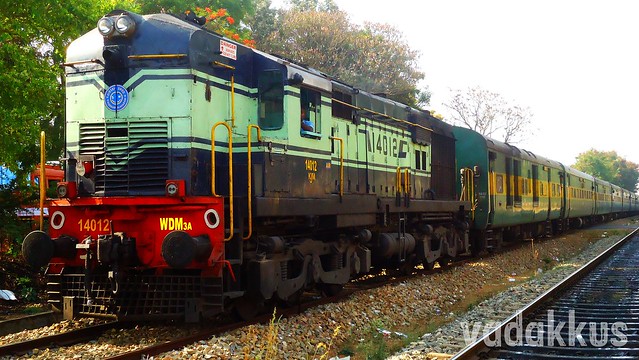

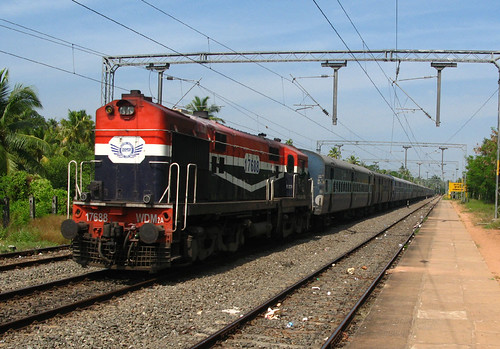

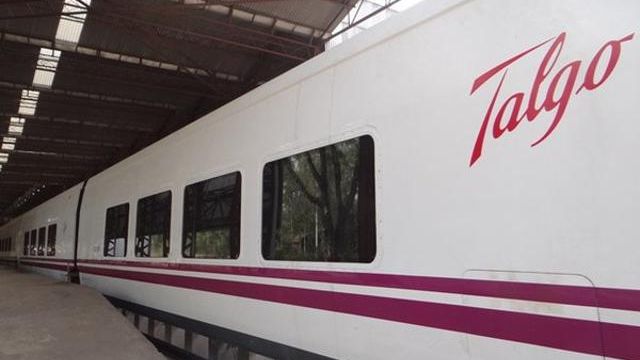
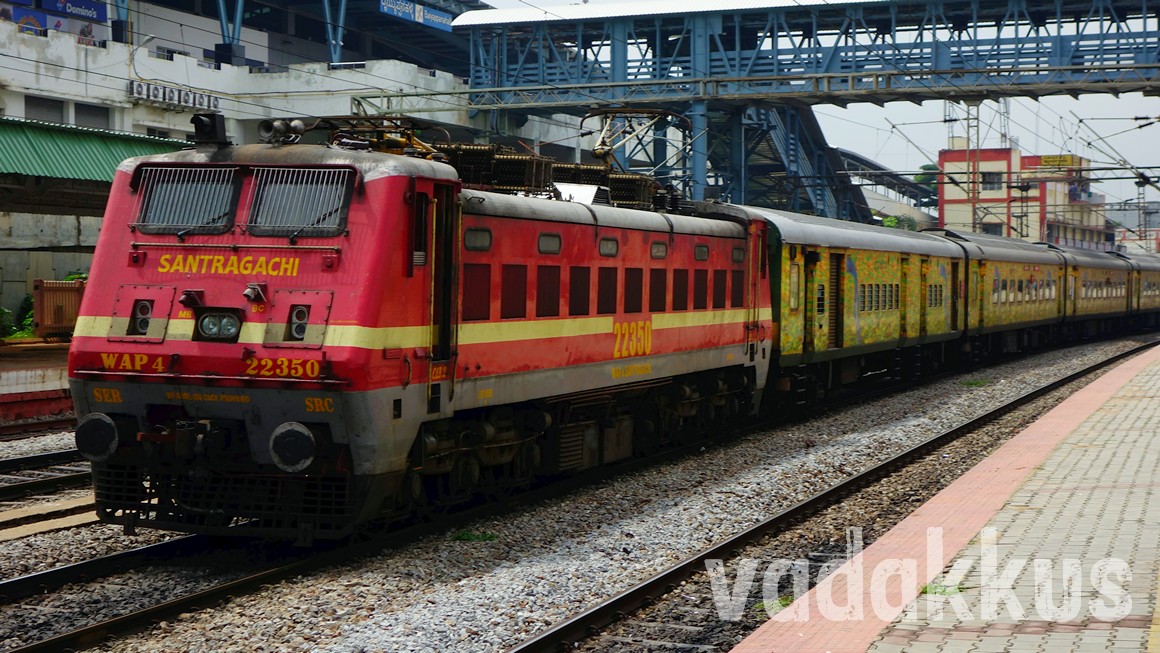

According to this post
WAG9 = Broad gauge, AC Powered, Goods Type and around some 9000hp engine but information on wikipedia says it has a power 6350 hp
bit confusing till now what is 4th and 5th numbers dedicate actually.